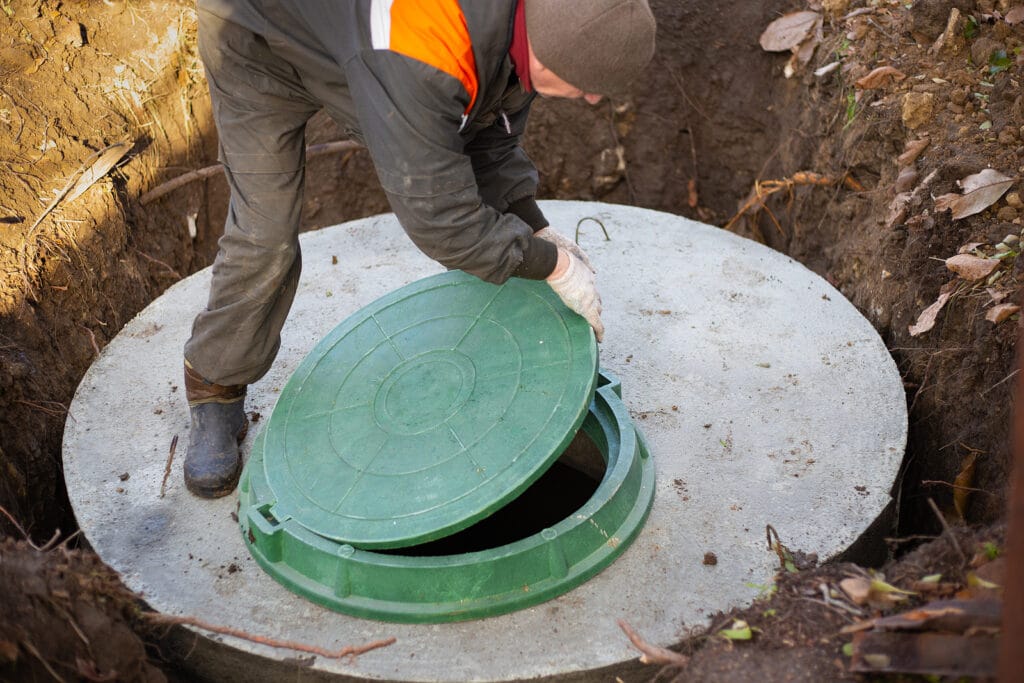Certain aspects of home ownership are often hidden until they become a problem. The septic tank is among such important but often ignored aspect of a house. We often overlook it, assuming it will dutifully carry out its duties without much maintenance or even concern. Like all system, have a limit to their time span of operation and have to be replaced over time.

Unprepared homeowners may struggle to cover the expense of replacing a septic system. The total cost is determined by many variables, and it’s essential to budget for a new system.
To determine the actual cost of the new septic system it’s crucial to take a look at more than the price. It’s more than just an issue of taking out the old tank before installing a new one. The cost will be affected by various services and elements. Costs are charged at every stage of the process, for example, obtaining permits and hiring experts, as well as excavation and construction.
The cost of replacing the septic system, which includes installation costs for the leach field, as well as the an septic system is an important aspect. The price of a new tank is determined by the size, material used, as well as the complexity of the installation. It is also affected by the site of the property, local laws, and soil conditions. Consult with experts from septic systems who will analyze your needs and give you an accurate estimate. They’ll also look at the size and design the leach field, to give you a full comprehension of the amount your project will cost.
Drainfields or leach fields are yet another expense. This is a crucial component for the treatment of wastewater and distribution. Costs for replacing a leach field that is damaged or not functioning can be greatly increased by careful planning. Factors like the size of the field, soil composition, and access all impact the expense, making it crucial to take these aspects into consideration when calculating the total cost.
Homeowners should think about the costs that will be incurred by replacing the septic tank. This can disrupt your routine, requiring that you temporarily leave your residence, or limit your use of water while the installation is being done. This inconvenience should be incorporated into your plans, since they could affect your routine, and possibly lead to additional costs for example, accommodation expenses or changes to your daily routine.
Furthermore, it’s essential to understand that regular maintenance and upkeep of your septic system is vital to extend its life and minimize the chances of premature replacement. Neglecting maintenance tasks may result in more severe problems in the future, like damage to the drainfield or failing the tank. It is wise to include costs for septic systems in your budget. This will enable you to save money.
By now, you may have realized that determining the septic system cost is not a straightforward task. It takes careful consideration of many factors, ranging from the dimensions and materials of the tank, to the complexity of the installation and condition of the leach field. Your location as well as local regulations can also affect the total cost. To obtain a cost estimate that is accurate, you should consult with an expert who is experienced in septic replacement.
If you’re thinking of replacing your septic, you may be surprised by the hidden costs. It’s crucial to learn about these hidden costs before making your decision.
The hidden costs of replacing a septic system include:
The cost of inspections and permits. It is necessary to obtain permits from your local authority before beginning construction on your septic replacement. These permits could be expensive and you could need to pay additional for inspections.
The expense of removal and excavation. The old septic has to be taken away and dug up before the new system is put in place. It can be a very costly undertaking, particularly in the event that it is difficult for the user to access the old system.
The price for backfilling and grading. After the old system is removed, it will be necessary to grade and backfill the hole. This is crucial to ensure that the new system is draining.
The cost of landscaping. You may have to landscape the area after the installation of the new system in order to keep it neat and tidy. It can be costly especially if a landscaper is needed.
When budgeting to replace your septic tank, make sure to consider the cost-savings that aren’t obvious. In this way you’ll be able to save yourself from surprises later on.
Eco-friendly septic systems can be a fantastic option for homeowners with an unfinancially tight budget. Not only are they cost-effective alternatives to conventional septic systems, they also assist in preserving the environment by reducing runoff as well as reducing the impact of water pollution. These green solutions are becoming affordable and readily available. They’re the ideal choice for people looking to lower their carbon footprint while not breaking the bank. While there may be some initial costs for transitioning to an eco-friendly system, these extras are more than compensated for in long-term savings. Going green isn’t merely a trend; it’s an essential lifestyle change that everyone should consider embracing if they’re really committed to protecting our planet for generations to follow. With the right system installed, you’ll relax knowing that you’re doing your part to help the world while also making sure that your home is functional and efficient with minimal maintenance requirements and a lower cost per month.